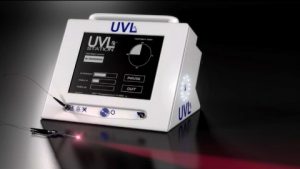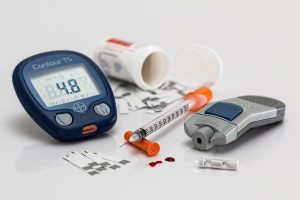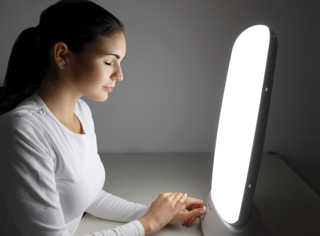
What Is Intravenous Light Therapy?
The UVLrx system is a term that is going to become frequently heard in the medical world. This system is a form of intravenous therapy that introduces low light energy into the circulatory system. This injection supports red blood cell oxygenation and a healthy immune system. The Model UVL1500 in used in assisting post-surgical and non-surgical patient recovery. The system helps inflammation, pain, and speeds up the wound healing process. This system is making headlines and quickly making a name for itself with it’s harm-free nature, low risk rates, and impeccable results.
Michael Harter, CEO and president of UVLrx, states that, “According to the International Society of Aesthetic Plastic Surgery, more than 20 million cosmetic surgical and non-surgical procedures were performed in 2014. The success of those procedures depends heavily on quality of recovery and patient response, which is why inflammation abatement is so important for the industry. By immediately reducing inflammation caused by an aesthetic procedure, our technology may minimize pain and accelerate healing, which in turn may lead to better results and a more satisfied post-op patient.”
(businesswire.com)
The system does more than reduce inflammation post cosmetic changes. It can also fight infections, brain disorders, chronic conditions, and more.
How Does It Work?
The Sophia Health Institute in Washington began using the UVLrx back in March of 2015. The health institute specializes in chronic pain and speaks highly of the system. Officials explained how the system works:, “It is a light therapy device that integrates and delivers multiple wavelengths of light intravenously without removing blood from the patient. The wavelengths involved in the UVLrx Station protocol stimulate the body’s natural immune system, weaken, and deactivate blood-borne pathogens. The UVLrx Station wavelengths are related to reductions in inflammation, increases in natural energy levels, and improvements in blood circulation. UVLrx can be used to treat many conditions including but not limited to chronic viral, bacterial, or parasitic infections, neurological disorders, inflammatory conditions, and many more chronic, unrelenting conditions.” (sophiahi.com)
The health institute goes on to explain how light therapy works by activating our photoreceptors. Examples of these photoreceptors are flavoproteins, porphyrins, hemoglobin, and flavins. When these receptors are exposed to light they come excited. This excitement affects all of the biochemical pathways directly and indirectly connected with the receptors.
Our photoreceptors can absorb a certain amount of light. This absorption spectrum defines the wavelength of light and color they need. Each wavelength of light is important and targets certain cells in order to drive extremely specific biological pathways. This also helps us line up colors with our wavelength therapy.
- Red (635 nm): Used to regulate cell bioenergetics. Supports immune response and cell repair.
- UVA (365 nm): Kills foreign particles like bacteria, fungi, and virus.
- Green (535 nm): Affects blood components and hemodynamics. Helps repair and stabilize pathways.
All 3 forms of wavelengths are delivered during each intravenous light therapy treatment. This creates a thorough and comprehensive treatment.
Why Is It So Important?
The UVLrx Station Model UVL1500 is the first system to offer intravenous and concurrent delivery of ultraviolet-A or UVA and multiple visible light wavelengths. It is used to treat a wide array of medical conditions and it is the first for many things. This system uses an adapter and a standard IV catheter to treat blood intravenously. There is no longer a need to remove blood from the body in order to treat it. The UVLrx intravenous light therapy system is a pioneering treatment program.


